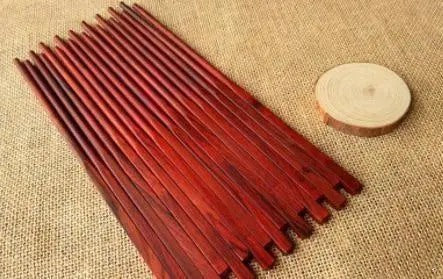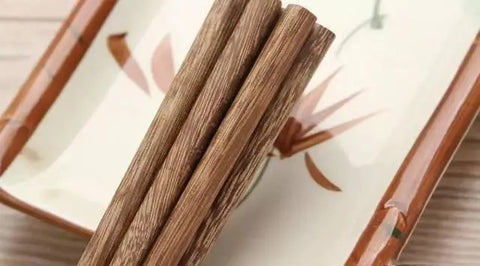For many families, it is common for a pair of chopsticks to be used for several years. In fact, the longer the chopsticks are used, the higher the number of bacteria. The chopsticks in some restaurants have been used for more than three years, and the number of bacteria on a pair of chopsticks is as high as 100,000.
In theory, bamboo chopsticks and wooden chopsticks should be replaced every 3 to 6 months. Chopsticks used for more than 6 months may also breed aflatoxin, which poses a health hazard.

In order to reduce this part of the risk, chopsticks should be replaced or disinfected regularly to keep them hygienic and prevent diseases from entering the mouth. How to judge whether chopsticks should be changed?
In both cases, quickly change chopsticks.
1. Discolored chopsticks
It is found that when ordinary chopsticks are used for 3-6 months, the color will become darker or lighter with the time and frequency of use. In addition, the edible paint on the surface of the chopsticks suffers from wear and tear due to the frequency of use. As long as the chopsticks have changed from the time of purchase, especially the color, they need to be replaced immediately.
A change in the color of the chopsticks means a change in the nature of the material itself. The factors that cause discoloration are usually caused by the adhesion of food, detergent, air, and residues in the dining cabinet during use. Long-term accumulation of bacteria is also a major factor in discoloration.

2. Spotted chopsticks
When using chopsticks, observe whether there are spots on the surface of the chopsticks every day, especially mildew spots. Bamboo and wood products are the favorite living environment for mold. As long as the environment is not dry and the humidity content of the material itself reaches a certain level, it only takes one day to produce it.
If there are spots on the chopsticks that are not bamboo or wood, it means that the chopsticks are probably moldy and deteriorated and can no longer be used. If the chopsticks are damp or bent, it means that the chopsticks have been damp or left for too long, and the shelf life may have expired. Smell it, if there is an obvious sour smell, it is a sign of contamination or expiration, and it cannot be used any longer.

So, is it an option to replace wooden chopsticks with stainless steel chopsticks?
If stainless steel chopsticks are food-grade, they will not be harmful to health. If stainless steel chopsticks are food grade, they are harmless to health, but if they are not food grade, they will affect health.
Buyer's Guide for Specific Stainless Steel Products:
Stainless steel tableware is generally printed with three codes "13-0", "18-0", and "18-8", which are stainless steel tableware. The number before the code indicates the chromium content, and the number after the code indicates the nickel content. Chromium is a material that prevents products from rusting, while nickel is a corrosion-resistant material. For example, "13-0" contains 13% chromium and no nickel.
1. When purchasing stainless steel products, carefully check whether the materials and steel grades used are marked on the outer packaging; whether the manufacturer's name, address, telephone number, and container hygiene standards are marked.
2. It can be judged by a magnet. Regular manufacturers generally use 304 (18-8) and 430 (18-0) stainless steel for spork, 420 (13-0) for knives, 430 and 420 are magnetic, and 304 is slightly magnetic. However, there is also a kind of tableware made of 201 and 202 materials on the market, which has not been magnetized, but whether it can be used to process tableware is controversial in China. Some people think that 201 and 202 materials contain high manganese and do not belong to food-grade stainless steel.


